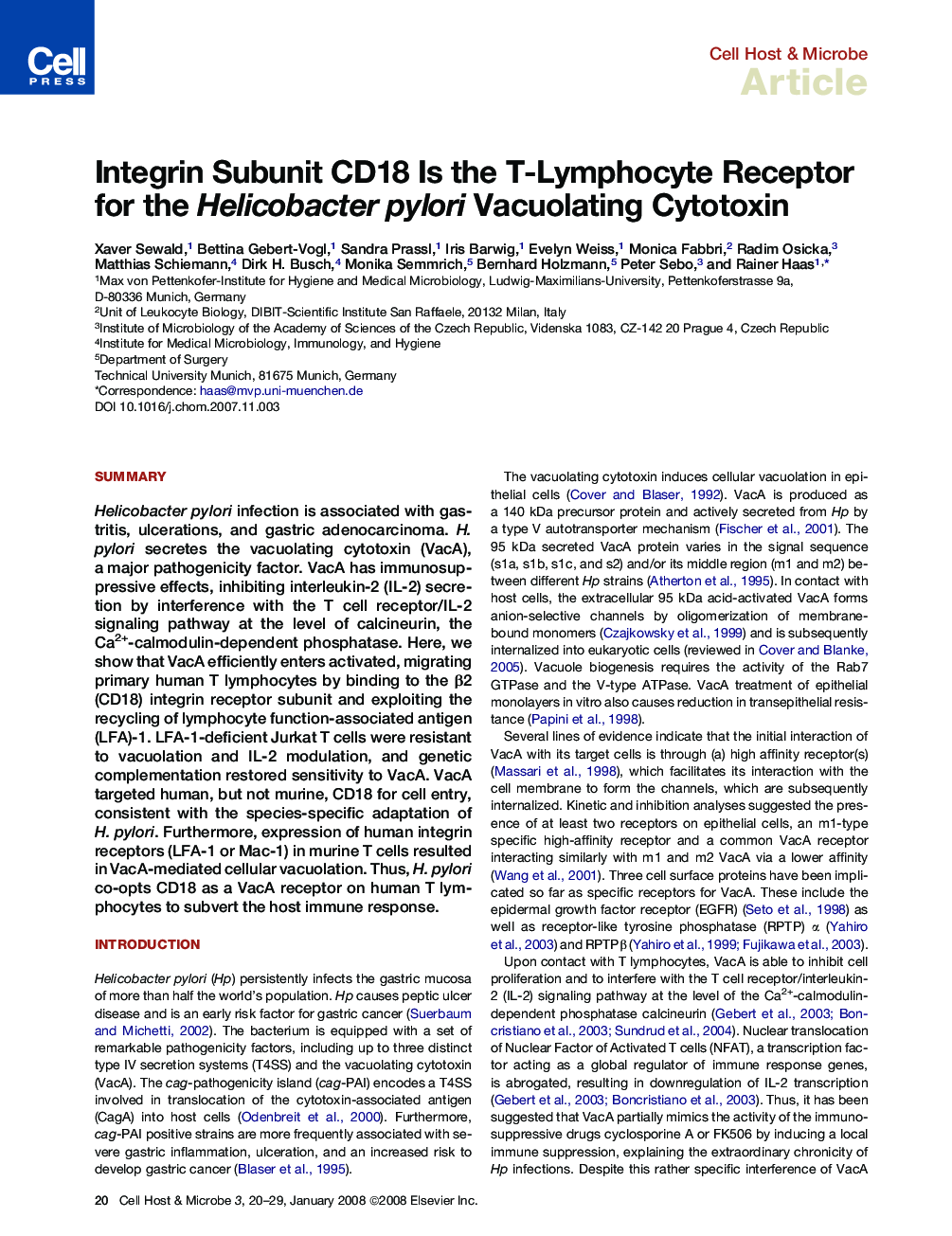| کد مقاله | کد نشریه | سال انتشار | مقاله انگلیسی | نسخه تمام متن |
|---|---|---|---|---|
| 4361543 | 1301397 | 2008 | 10 صفحه PDF | دانلود رایگان |

SummaryHelicobacter pylori infection is associated with gastritis, ulcerations, and gastric adenocarcinoma. H. pylori secretes the vacuolating cytotoxin (VacA), a major pathogenicity factor. VacA has immunosuppressive effects, inhibiting interleukin-2 (IL-2) secretion by interference with the T cell receptor/IL-2 signaling pathway at the level of calcineurin, the Ca2+-calmodulin-dependent phosphatase. Here, we show that VacA efficiently enters activated, migrating primary human T lymphocytes by binding to the β2 (CD18) integrin receptor subunit and exploiting the recycling of lymphocyte function-associated antigen (LFA)-1. LFA-1-deficient Jurkat T cells were resistant to vacuolation and IL-2 modulation, and genetic complementation restored sensitivity to VacA. VacA targeted human, but not murine, CD18 for cell entry, consistent with the species-specific adaptation of H. pylori. Furthermore, expression of human integrin receptors (LFA-1 or Mac-1) in murine T cells resulted in VacA-mediated cellular vacuolation. Thus, H. pylori co-opts CD18 as a VacA receptor on human T lymphocytes to subvert the host immune response.
Journal: - Volume 3, Issue 1, 17 January 2008, Pages 20–29